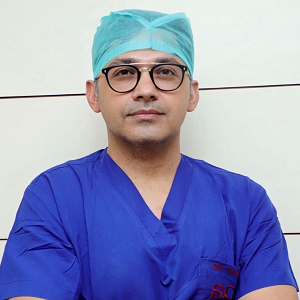Types of External Hemorrhoid Treatment
The specific treatment approach for external hemorrhoids is highly dependent on both the severity of the symptoms and the extent of the condition. The following are the primary methods for addressing external hemorrhoids:
1. Conservative Treatments
These methods involve non-surgical, non-invasive approaches focused on alleviating discomfort and reducing symptoms. They are often the first line of defense:
- Dietary Modifications: Incorporating a high-fiber diet with a focus on adequate hydration is foundational for conservative treatment. Fiber helps soften stool, making bowel movements less painful by reducing the need to strain, which can aggravate hemorrhoids. This prevents further irritation.
- Topical Medications: Over-the-counter creams, like those containing hydrocortisone or witch hazel, can effectively reduce itching and inflammation, bringing about quick relief. The application of these creams targets the immediate area of discomfort, providing localized relief.
- Pain Management: Sitz baths, which involve soaking the anal area in warm water, alongside oral pain relievers such as ibuprofen, can provide significant relief from discomfort. These measures reduce swelling, soothe irritation, and alleviate pain effectively.
- Stool Softeners: The use of medications like docusate sodium helps in preventing constipation by softening the stools, thereby making bowel movements easier and less traumatic. These softeners are particularly helpful in preventing strain during bowel movements.
- Lifestyle Adjustments: Incorporating regular exercise and avoiding prolonged periods of sitting or standing can alleviate symptoms.
- Regular bowel habits: Going to the bathroom as soon as you feel the urge rather than holding it can prevent straining.
2. Minimally Invasive Procedures
These procedures are considered when conservative treatments have not yielded satisfactory results. They offer less invasive options:
- Thrombectomy: This procedure is specifically for acutely thrombosed hemorrhoids, involving a small incision under local anesthesia to remove the blood clot, which offers immediate relief. This process addresses the root cause of the pain and provides rapid relief.
- Sclerotherapy: This method involves injecting a chemical solution directly into the hemorrhoid. The solution causes the hemorrhoid to shrink by disrupting its blood supply. This approach leads to a gradual reduction of the hemorrhoid.
- Infrared Coagulation: The process utilizes heat from an infrared light to create scar tissue, effectively cutting off the blood flow to the hemorrhoid. This helps shrink and eventually eliminate the hemorrhoid.
- Cryotherapy: Involves freezing the hemorrhoid with liquid nitrogen, causing it to shrink and eventually fall off.
- Rubber band ligation: This involves placing rubber bands at the base of the hemorrhoid which cuts off circulation.
3.
Surgical Treatments
Surgical methods are typically reserved for severe or recurrent cases where other treatments haven’t worked:
- Excisional Hemorrhoidectomy: This is the most effective surgical treatment for large external hemorrhoids. This procedure involves the surgical removal of the hemorrhoidal tissue. It usually requires local or general anesthesia. This method provides a definitive solution by removing the problematic tissue.
- Stapled Hemorrhoidopexy (PPH): Although primarily used for internal hemorrhoids, this procedure can be used for mixed hemorrhoids in certain situations. It utilizes a stapler-like instrument to reposition and cut off the blood supply to the hemorrhoid. This minimally invasive approach provides an alternative surgical option.
- Laser hemorrhoidectomy: Involves using a laser to remove hemorrhoidal tissue.
- Doppler-guided hemorrhoidal artery ligation: Uses ultrasound to locate and tie off blood vessels feeding the hemorrhoid.
Consulting a specialist at SCI Hospital provides personalized care tailored to each patient's specific condition, ensuring a targeted and effective treatment plan.
What Should Be Eaten After External Hemorrhoid Treatment?
Maintaining a proper nutritional plan plays a crucial role in the recovery process following hemorrhoid treatment. This approach aids the body in healing and prevents further complications:
1. High-Fiber Foods
Fiber is essential in preventing constipation and promoting smooth, effortless bowel movements. It adds bulk to the stool and facilitates easier passage:
- Whole grains (oats, brown rice, whole wheat bread): These provide complex carbohydrates and fiber, which support digestion.
- Fruits with skin (apples, pears, berries): The skin of these fruits is rich in fiber and beneficial for digestion.
- Vegetables (spinach, broccoli, carrots): These vegetables are high in fiber, vitamins, and minerals, all of which aid in digestive health.
- Legumes (lentils, chickpeas, kidney beans): Legumes are an excellent source of fiber and plant-based protein, supporting overall health.
- Psyllium husk: A soluble fiber supplement can be added to your diet.
- Flaxseeds: Another excellent source of soluble fiber, these seeds can be easily added to meals.
2. Hydration
Adequate water intake is critical. Aim for at least 3–4 liters of water daily to keep stools soft and to ease bowel movements. Clear soups, herbal teas, and diluted fruit juices also contribute to maintaining hydration levels. Proper hydration facilitates bowel function and reduces the risk of constipation.
3. Lean Proteins
Lean protein sources, such as skinless poultry, fish, eggs, tofu, and low-fat dairy, help support tissue repair and promote faster healing. These proteins provide essential amino acids needed for recovery.
4. Probiotics
Probiotic-rich foods like yogurt and buttermilk support a healthy gut environment by promoting beneficial bacteria. This can improve digestion and prevent complications.
5. Anti-inflammatory Foods
Consuming anti-inflammatory foods like avocados, nuts, seeds, and olive oil can help to reduce inflammation in the body, aiding the healing process
A well-rounded diet not only assists in recovery but also plays a vital role in preventing the recurrence of hemorrhoids.
What Should Be Avoided After External Hemorrhoid Treatment?
To prevent any complications and promote swift recovery, it is important to avoid certain foods and activities that can potentially worsen the condition or hinder the healing process:
- 1.
Foods to Avoid
- Spicy foods: These can irritate the digestive tract, potentially causing discomfort and exacerbating hemorrhoid symptoms
- Low-fiber foods: Processed snacks, cheese, and red meat can contribute to constipation, making bowel movements more difficult and painful.
- Greasy or fried foods: These are difficult to digest and can lead to digestive discomfort and strain during bowel movements.
- Alcohol and caffeine: These substances can dehydrate the body, leading to constipation, which can complicate the healing process.
- Sugary foods: These lack the essential nutrients needed for healing and can also contribute to digestive problems.
- Dairy Products: Some may experience discomfort after consuming dairy.
- Processed foods: Lack essential nutrients, high in additives.
- Straining during bowel movements: This can worsen hemorrhoids by putting additional pressure on the area. It is important to avoid forcing bowel movements.
- Prolonged sitting or standing: These activities can place additional pressure on the anal area, potentially increasing discomfort and hindering the healing process.
- Heavy lifting or intense physical activity: These can increase pressure on the affected area and could lead to complications during the recovery period.
2. Activities to Avoid
Adhering to these guidelines minimizes irritation, prevents complications, and supports a quicker recovery.
Recovery Time of External Hemorrhoid Treatment
The duration of the recovery period varies depending on the specific treatment method used and the individual’s response to the treatment. It's important to allow the body time to heal fully.
1. Conservative Treatments
consistent adherence to dietary changes and medication use, symptoms usually begin to improve within days to weeks. This process may require patience, but it is often effective.
2. Minimally Invasive Procedures
Recovery tends to be quick, often within a few days. Although some minor discomfort might be felt temporarily, most patients return to their regular routines very soon after the procedure.
3. Surgical Treatments
Complete recovery from a hemorrhoidectomy may take 1–3 weeks, during which pain management using sitz baths and prescribed medications helps to reduce discomfort. Stapled procedures generally result in faster recovery times, but it is important to monitor for potential complications such as prolapse, which may require follow-up care.
Patients should follow all post-operative instructions given by their healthcare provider at SCI Hospital to ensure the best possible outcomes and to minimize the risk of complications.
Cost of External Hemorrhoid Treatment in India
The cost of external hemorrhoid treatment in India is subject to several variables, including the type of treatment, severity of the condition, and the chosen healthcare facility. Diagnostic evaluations, prescribed medications, minimally invasive options, and surgical treatments all factor into the overall expense. Additionally, follow-up appointments, specific dietary guidelines, and any rehabilitation may add to the total cost.
SCI Hospital ensures that patients have access to specialist consultations and personalized treatment plans. The team at the hospital is well equipped to help patients understand the financial implications of their treatments, offering advice on managing costs effectively while maintaining high standards of care. They aim to provide comprehensive and accessible treatment to all patients.

Dr. Vishal Dutt Gour
MBBS , MS - General Surgery , MCh - Urology
- Pain Management Specialist
- 22+ Years Years Experience

Dr. Gautam Banga
MBBS, MS - General Surgery, MCh - Urology Urologist, Andrologist, Urological Surgeon
- Pain Management Specialist
- 13+ Years Years Experience
FAQs
Mild external hemorrhoids often resolve on their own with conservative measures like adopting a high-fiber diet, using topical treatments, and taking regular sitz baths. However, more severe cases usually require medical intervention to resolve effectively.
For thrombosed hemorrhoids, immediate relief can often be obtained through thrombectomy, which quickly removes the clot. Furthermore, the use of topical treatments such as hydrocortisone creams or witch hazel can also help reduce swelling quickly and relieve discomfort.
Yes, external hemorrhoids can be reduced over time through consistent conservative measures, like increasing dietary fiber intake and applying topical medications. For more persistent cases, minimally invasive procedures such as sclerotherapy can provide more rapid and effective results.
To effectively shrink a piles lump: Increase dietary fiber intake to soften stools and promote smoother bowel movements. Use topical treatments to alleviate inflammation and discomfort in the affected area. Take regular warm sitz baths to soothe the area and reduce swelling. Seek medical advice for advanced treatment options like rubber band ligation or surgery if symptoms persist or worsen despite home treatments. For access to expert guidance on external hemorrhoid treatment and to receive a recovery plan tailored to your specific requirements, visit SCI Hospital today!
Consult Now

